Do you want to grow grass in a shaded area of your yard, but don’t know where to start?
Have you tried growing grass, but continue to fail?
Or do you want to buy the best grass seed for shade?
Planting Grass is a difficult and sometimes tedious task that typically ends in failure or minimal success.
Luckily for you, TheGardeningDad is an expert in grass seed and grass growing.
This article will not only provide you with the 9 BEST Grass Seed for Shade, but will also provide you with a guide on how to plant the seed and what you should not do when planting grass seeds.
9 Best Grass Seeds for Shade
There are many types of grass seeds that gardeners can use for their yard.
Almost all of these grass seeds are meant for full-sun areas of your yard.
But if you are looking for grass in shaded areas of your property then there are 9 specific kinds you should use for success.
It should be noted that in order to maximize your chances of success you should buy a grass seed mix, rather than one type of grass seed.
You should buy a grass seed mix because you can still have success even if one type of seed in the mix fails.
1. Red Creeping Fescue (cool-season grass)

Red Creeping Fescue is a great turf grass option. This grass has a beautiful green color that is recognizable as soon as gardeners and lawn owners see it.
This cool-season grass is a very reliable deep shade turf grass.
It is also cold-weather tolerant, making it an excellent option for northern climates.
The main type of Red Creeping Fescue is the Rubra Rubra.
2. Velvet Bentgrass (cool-season grass)
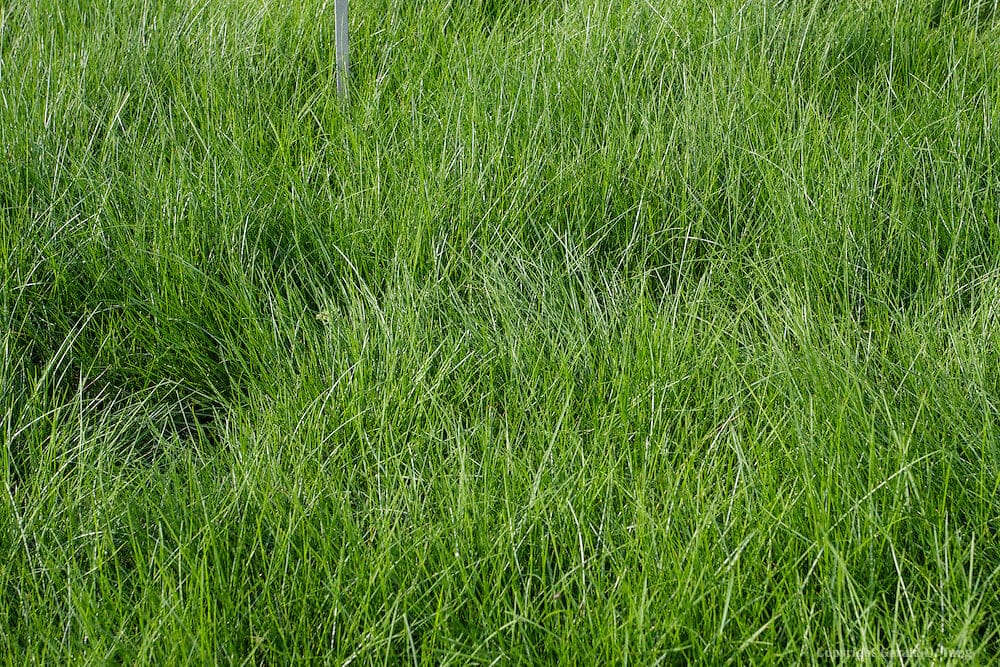
Velvet Bentgrass is another amazing cool-season grass that you should consider to grow.
This type of grass is used on many golf greens and is known as a very hardy grass that is excellent for its drought tolerance.
Not only this, but this grass recovers quickly and grows in a dark green, high-density color. These two factors make it a good grass for mowing.
Some types of Velvet Bentgrass include Creeping and Colonial.
3. Poa Bluegrass (cool-season grass)
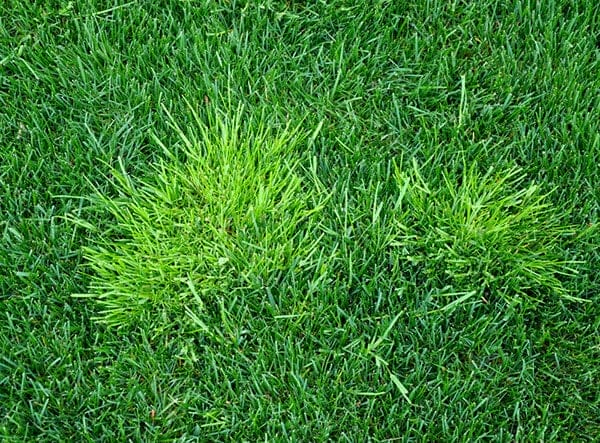
Poa Bluegrass is typically found in wild on mineral and humus-rich soil. But it can also be a great grass to grow in your yard.
This is another type of grass that is heat-tolerant, regenerates quickly, and grows with a rough stalk that makes it indifferent to water conditions.
Not only this, but this grass grows as a bright green to blue-green, high-density color.
It should get at least 4 hours of partial sunlight but does not mix well with other grass seeds.
There is only one kind of Poa Bluegrass.
4. Tall Fescue (cool-season grass)
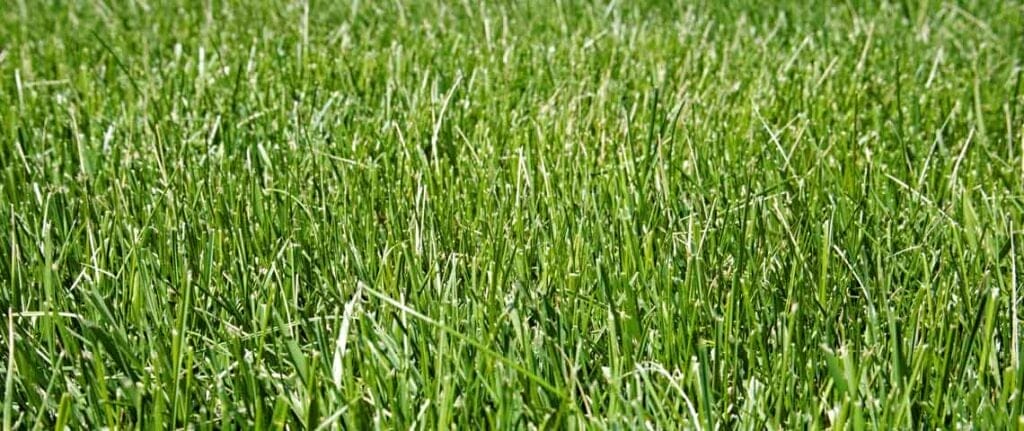
Tall Fescue grass is a narrow-leaved, dark green grass that is perfect for shade due to its deep roots.
It needs 4 hours of partial sunlight but is excellent against droughts, heat, and water.
If you are looking for a grass that quickly grows then look no further than this.
You can find this grass is many grass seed mixtures and it is one of the best types of grass for foot-traffic.
There is only one kind of Tall Fescue grass.
5. Rough Bluegrass (cool-season grass)
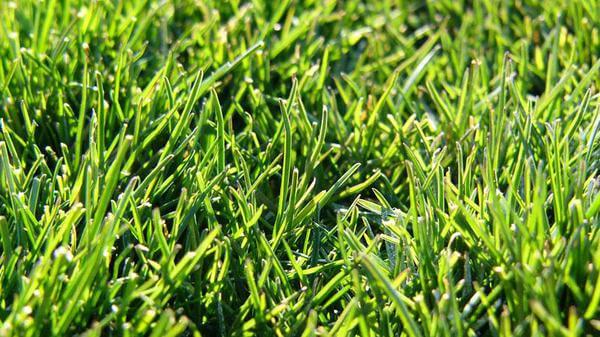
Rough Bluegrass has a great reputation as an excellent shade-tolerant grass.
Unlike other grass types, it needs very little hours of direct and partial sunlight.
Like its counterpart, the Poa Bluegrass, it grows in a bright green to blue-green color.
This is a great option for most gardeners and homeowners, but should not be mixed with other grass seeds.
Some types of rough bluegrass include chewings and bermudagrass.
6. Zoysia (warm-season grass)

Zoysia grass seed is a great warm-season grass that is perfect for northern climates.
This type of grass comes in a thick, soft, and light to medium green color that is great for a medium shade.
It should be noted that this type of grass needs about 6 hours of partial sun.
Specific types of Zoysia grass include diamond, cavalier, crowne, and el toro.
7. St. Augustine (warm-season grass)
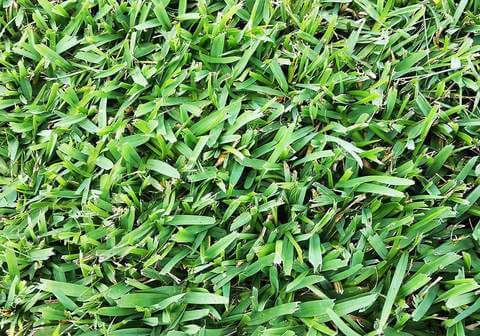
St. Augustine grass is another great warm-season grass option.
This type of grass is coarse, light to dark green, and is the most shade-tolerant warm-season grass.
It should be noted that it does need about 5 hours of partial sunlight.
Some specific types of St. Augustine grass are sapphire, Seville, palmetto, and bitter blue.
8. Centipede Grass (warm-season grass)
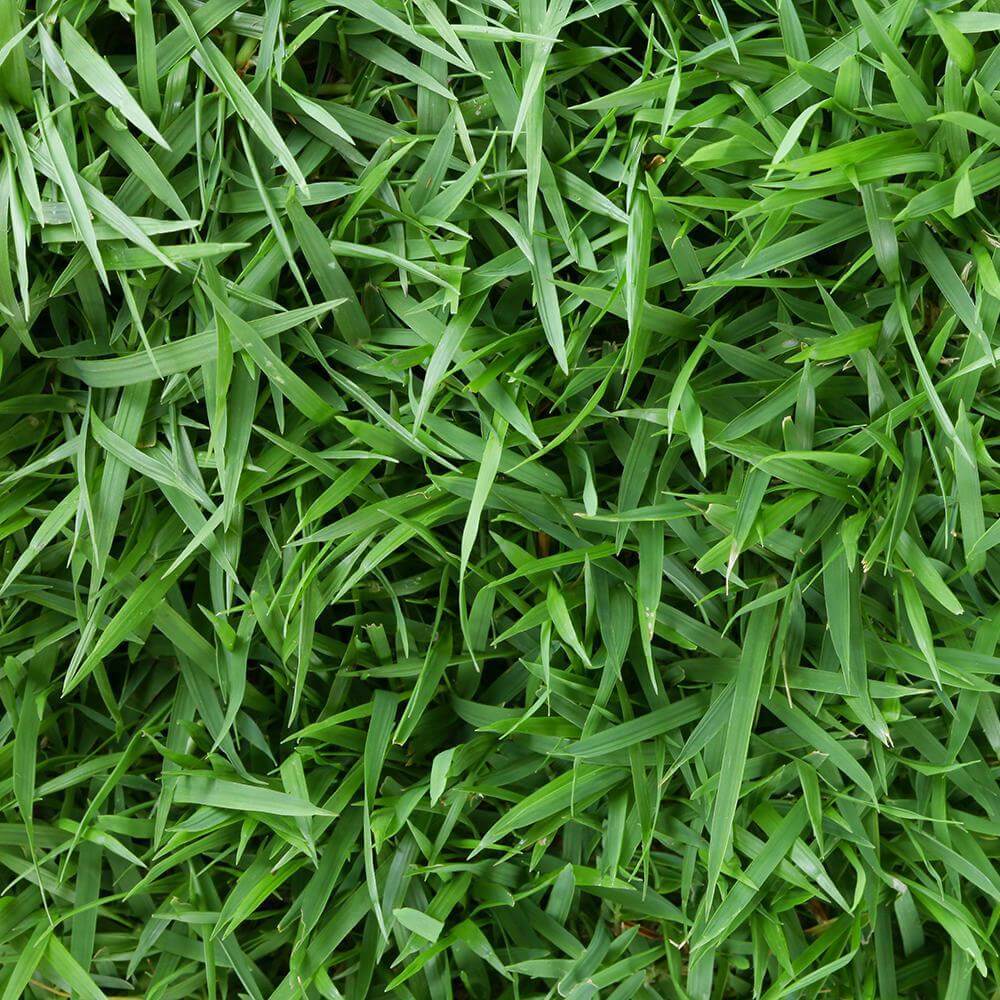
Centipede Grass is another warm-season grass that is perfect for light-shade areas. It should be noted that it needs approximately 6 hours of partial-sun.
This type of grass grows in a thick, light to dark green color and can handle water, drought, and heat relatively well.
Some types of Centipede Grass is Raleigh, Common, and Oklawn.
9. Perennial Ryegrass (cool-season grass)

Perennial ryegrass is a great seed for a quick fix in deep shade. It can germinate, grow, and make a good ground cover in about a year.
This grass has a shiny, finely-textured dark green color and although it prefers sun, it can tolerate little of it.
If you are looking for a grass that grows the quickest then look no further than Ryegrass.
Some types of Perennial Ryegrass include Citadel, Vivid, and Windstar.
How to Plant Grass Seed in the Shade
Planting grass seed, in general, requires a little bit of art and science.
But if you want to plant grass seed in shade then it is important to follow very specific instructions if you want success.
Below, are the exact instructions I recommend following if you want to have a higher likelihood of consistent success with growing grass seed in shade:
1. Pick your spot
Grass needs light, air, water, and nutrients to properly grow.
Because of this, you will want to plant your grass seed in a shaded area that will receive 4 to 6 hours of partial shade.
Make sure to stay away from planting your grass seed around maples, dogwood, and oak trees. Grass struggles to grow around these trees due to their large branches.
On the other hand, grass grows great by locust, sycamore, crab apples, pears, and elm trees.
The last tip you should follow is if there are large tree roots then do not plant your grass. These roots will overpower your grass for nutrients.
2. Prune trees, shrubs, and brush
After you determine the location of where you want to plant your shaded grass seed you will want to make sure you have proper airflow and sunlight.
You can do this by pruning trees, shrubs, and brush.
You will want to prune surrounding trees so the lowest branches are no closer than 6 feet above the ground.
Pruning this way should allow more light, water, and airflow to reach your grass.
If you have already started growing grass seed or you have established grass, you will know it’s not getting the proper nutrients if the grass leaves are thin and stretch towards the sun.
3. Pick Your Seed
After determining the location of your grass seed and properly pruning trees, shrubs, and brush surrounding it you will want to pick your seed.
When you pick your shaded grass seed it is important to determine which type is suitable for your needs.
Factors you should consider is where you live, what color and texture you want your grass to look like, and the size of the area seed is needed.
It should be noted that there are numerous species of grass within each type and unless you are an expert you won’t be able to tell the difference between them.
Instead, focus on grass seed quality and grass seed mix.
When buying the best grass seed for shade you will want to go with well-known companies like Pennington, Scotts, and Jonathan Green. All of these companies sell their seed on Amazon.
Also, I recommend buying a grass seed mix instead of a specific grass seed type.
The reason for this is if a specific type of grass seed fails your grass won’t grow. If one type within a grass seed mix fails the other types of grass will grow.
This will help you reduce the time, energy, and money spent researching what grass seed is perfect for your specific lawn.
You should also pay attention to whether you want warm-season grass seed or cool-season grass seed.
Cool-season grass seed can tolerate shade better than warm-season grass.
This type of grass seed can grow best in the spring and early summer and goes dormant in the winter. It should be planted when temperatures are between 32-50 degrees Fahrenheit.
Warm-season grass seed is perfect for southern climates.
This type of grass seed can grow best in early spring or late fall. It should be planted when temperatures are between 75-85 degrees Fahrenheit.
4. Aerate your Lawn (Optional)
Before you begin planting your grass seed you may want to think about aerating your lawn.
Aeration is a technique in which homeowners and gardeners cause small holes in the soil to increase airflow, water, and nutrients into the ground.
You may need to aerate your lawn if you find it is filled with compact soil, such as clay, rock, or hard soil.
Also, you may also need to aerate your lawn if you have a lot foot traffic or heavy equipment on it.
You can tell your lawn needs aerated soil and plants don’t grow or slowly grow.
One of the best ways to aerate your lawn is with a dethatcher.
Dethatchers can be attached to lawnmowers or ATVs and are then dragged across your lawn. As they move they create small holes in the ground that begin the aeration process.
If you want to learn more about aeration in 2 minutes then watch the below video:
5. Plant your Seed THIS Way
Once you’ve followed steps 1-4 it is finally time to plant your seed.
If you want your grass to grow in the most effective and efficient way possible then you’ll want to follow the below guidelines when sowing or planting your grass seed.
- Cover the area where you want to plant your seed with 2-3 inches of organic matter, like a well-composted manure. If planting grass under a tree, start it 2-4 feet away from the trunk of the tree.
- Till this organic matter to a depth of 6-8 inches. Learn about the best tillers in my article, Best Tillers for ALL Gardening Needs.
- Sow or plant your grass seed using a grass seed spreader. This will overseed your growing area, meaning a higher chance of success.
- After seeding, rake the soil to slightly cover your seed with soil.
- Next, mulch your growing area with one bale of straw per 1,000 square feet for warm-season grass or 2 bales of straw per 1,000 for cool-season grass.
- For the next 20 days water to keep the top 1/2 constantly moist. This may require 2-3 times of light watering a day. You will need to water when the soil looks light brown. You will want to stop watering when the soil begins a darker shade of brown.
- For the next 40 days continue to water once to twice a day when there is no rain. Stop after you have watered your grass for a total of 60 days.
6. Properly Care for Your Grass
After planting and growing your grass you will want to make sure you properly care for it during its first year to increase the likelihood of long-term success.
When mowing your shaded grass you will want to cut it approximately 1/2 to 1 inch higher than areas of your lawn that receive full sun.
Not only this, but you will want to alternate the direction you mow your lawn each time to help encourage regeneration.
Also, you will only want to water your grass when necessary. Because shaded grass does not absorb water as well as direct-sun grass you do not want to flood it.
7. Use Fertilizer, but not Herbicide
After your grass has begun to grow it is okay to use fertilizer.
You will want to use a fertilizer with 1/2 to 2/3 the nitrogen of fertilizer used on sunny lawns. You should apply this lightly in the spring and then again in the fall.
While fertilizer your grass can be beneficial, using a herbicide can be harmful.
Do not use weed killers or herbicide during the first 2 years of growing grass. These applicants can cause undue stress to your grass, making it thin and weak.
Conclusion
Planting grass seed in shade is difficult, but it can be easier with the best types of grass seed.
If you want the best success in growing grass seed in shade then as a reminder you’ll want to buy the following seed type:
- Red Creeping Fescue
- Velvet Bentgrass
- Poa Bluegrass
- Tall Fescue
- Rough Bluegrass
- Zoysia
- St. Augustine
- Centipede
- Perennial
Not only this, but you will want to take advantage of the following tips:
- Aerate your lawn
- Prune trees, shrubs, and bushes surrounding your growing area
- Use organic matter to help your seed germinate
- Till your lawn before planting your seed
- Use a spreader to overseed your growing area
- Use bales of straw to protect your seeds
- Mow 1/2 to 1 inch higher than other parts of your lawn
- Use fertilizer to help promote grass growth
There are also several things you shouldn’t do, including:
- Using herbicide and weed killer
- Plant seed around large trees like maple
- Overwater
- Allow foot traffic and heavy equipment on your growing area
What’s Next
If you enjoyed this article then I recommend reading the below articles:
Best Wood Chippers for Gardeners
And if you want to take your shade-grown grass to a whole other level, check out beautifulbeastcoffe to learn more about the benefits of shade-grown coffee beans.


